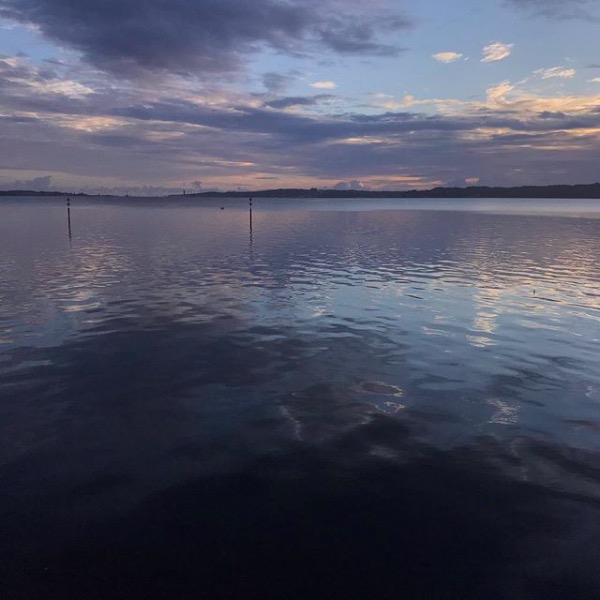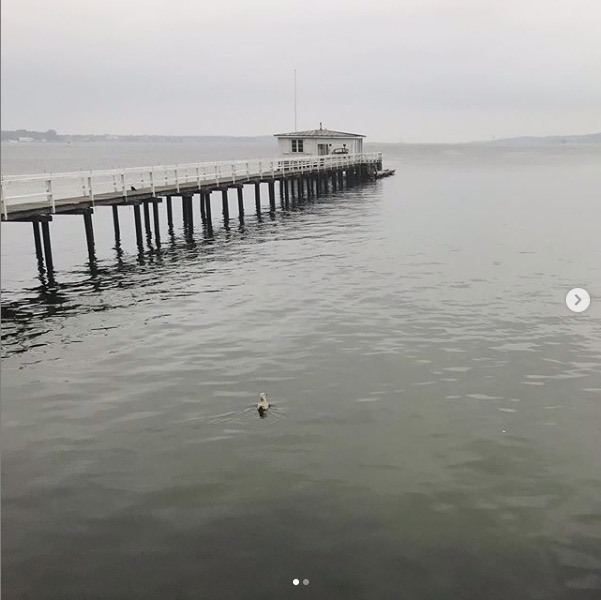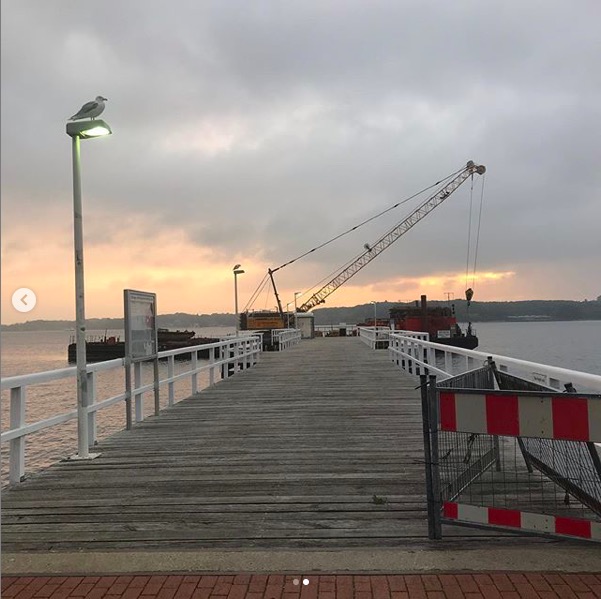
#WaveWatchingWednesday
It’s #WaveWatchingWednesday, and that means that you get all of last weeks wave watching Instagram posts compiled into one blog post. Enjoy!
Beautiful morning #wavewatching today! Longer, regular waves of a ship’s wake, and tiny delicate wakes made by the swimming geese. Good morning everybody! :)

Love the light! Check out how waves become a lot more visible in areas where we can recognize that reflections of structures have been deformed (rather than where the reflected sky is the same color everywhere anyway, so it isn’t noticeable if it’s represented correctly or deformed…)

When waves run gradually into very shallow water, their shape changes. Instead of the typical sinus-y shape, the crests end up looking a bit like pool noodles being pushed towards the beach, with very wide, flat troughs in between. Did you ever notice?

Ok, maybe not the prettiest just yet, but I think it’s a pretty cool idea to show the essence of our #drytheory2juicyreality project during social distancing in a nutshell: students do experiments at home while watching me do the same experiment plus a more complicated version on a video call. Would you have understood that from the picture?
 What I find interesting today? That looking at the water from this perspective, it wasn’t really clear to me which direction the wind was coming from. On both sides of the bay there are areas that are smoother than in the middle, and usually when I see a smooth surface next to an obstacle, I would assume that the smooth part is in the lee of the obstacle, sheltered from the wind, and that only further away, with enough fetch, surface roughness increases & waves form. So what’s going on here, is the wind coming from two directions at once?
What I find interesting today? That looking at the water from this perspective, it wasn’t really clear to me which direction the wind was coming from. On both sides of the bay there are areas that are smoother than in the middle, and usually when I see a smooth surface next to an obstacle, I would assume that the smooth part is in the lee of the obstacle, sheltered from the wind, and that only further away, with enough fetch, surface roughness increases & waves form. So what’s going on here, is the wind coming from two directions at once?
I think that the wind is going right-to-left here (and in fact it was, I checked later) and that the smooth patch on the left is due to a boundary layer upstream of the obstacle, where the wind already “senses” (technical term ;)) the obstacle and starts making a detour, such that there is an area with low winds right upstream of the obstacle. And since waves are so small in general, they don’t propagate far into that area, leaving it smooth.
What do you think? Does this sound plausible?


Interesting how the waves seem to have different orientations in different areas, isn’t it? That’s mainly an illusion caused by the different light conditions that preferentially show different components of the full wave field in different parts of the picture. In reality, there is that checkerboard pattern everywhere!

With water levels as low as today, we can see beautiful shallow water waves right at #kiellinie. Don’t they look just like pool noodles being pushed towards the beach? The same waves are also present further offshore, but their crests really only build up and get pointy as they run into very shallow water.
Got to observe these as part of a virtual conference I am attending: the lunch break exercise was to find fieldwork opportunities right on our doorstep. How brilliant is that?

That’s my view when looking up from the virtual conference I’m attending today (And the paper I presented are here: Topics are surprisingly one on #KitchenOceanography and one on #WaveWatching!). My own #fieldworkfix: #diynamicsteam rotating tank, several tripods, ring light for workshop lead tomorrow, beautiful blue rheoscopic fluid. Can’t remember what it was like when all of this stuff wasn’t living in my livingroom. Intresting times…

Why is everything so grey today? That’s not a philosophical question but a physics one!
Because there are many tiny droplets in the atmosphere, light gets reflected everywhere, and rather than arriving as a directional picture of something, the mixture of different wave lengths turns out grey. Would be white in a perfect world with more light and less structures & shadows…

Don’t the seagulls look like vultures guarding the construction site?

And that’s it for today! Now go out and do some wave watching yourself! :-)